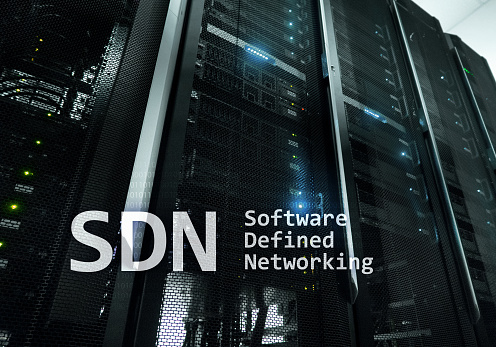In the domain of systems administration, Programming Characterized Systems administration (SDN) has arisen as a notable change in outlook, rethinking how organizations are planned, conveyed, and made due. Dissimilar to conventional systems administration draws near, which depends vigorously on equipment designs and manual intercession, Software-defined Networking uses programming deliberation to control network conduct progressively.

Advancement of Customary Systems administration
Conventional systems administration procedures were portrayed by their dependence on static, equipment-driven frameworks. Each systems administration gadget, like switches and switches, worked independently, prompting restricted adaptability and versatility. Changes or advancements required manual design, frequently bringing about tedious cycles and functional shortcomings.
Parts of Software-defined Networking
Software-defined Networking design contains three key parts: the regulator, the information plane, and organization gadgets. The regulator fills in as the cerebrum of the organization, arranging traffic stream and overseeing gadget arrangements. The information plane, comprising of switches and switches, advances parcels as indicated by the regulator’s guidelines.

How SDN Functions
At the centre of Software-defined Networking lies the partition of the control plane from the information plane. The regulator speaks with network gadgets using normalized conventions like OpenFlow, giving directions for bundle sending and steering. This incorporated control empowers dynamic organization executives, working with fast variation to change traffic examples and application necessities.
Advantages of Software-defined Networking
Adaptability and Versatility
SDN offers unmatched adaptability, permitting directors to automatically arrange network conduct through programming points of interaction. This deftness works on network provisioning and empowers quick adaptability to oblige developing requests.
Unified Administration
By incorporating network control, Software-defined Networking smoothes out administration assignments and decreases functional intricacy. Executives can authorize steady approaches across heterogeneous conditions, improving permeability and command over network activities.

Cost Decrease
The programmable idea of Software-defined Networking {SDN} lessens equipment reliance and limits the requirement for expensive restrictive gear. Moreover, computerization abilities smooth out managerial work processes, diminishing work above and functional costs.
Further developed Security
SDN improves network security by carrying out granular access controls and traffic division. With incorporated approach requirements, executives can quickly answer security dangers and relieve gambles across the whole organization’s foundation.
Challenges in Carrying out SDN
Despite its horde benefits, Software-defined Networking reception presents a few difficulties for associations. Similarity issues with existing organization frameworks, security concerns regarding unified control, and the requirement for specific abilities and preparation are among the essential snags looked at in executing SDN arrangements.

Use Instances of Software-defined Networking
SDN finds applications across different systems administration conditions, including server farms, grounds organizations, and wide region organizations (WANs). In server farms, Software-defined Networking works with asset enhancement and responsibility for the executives, improving functional productivity and deftness. Grounds networks benefit from incorporated administration and strategy authorization, working on network organization and upgrading security pose. SDN-empowered WANs further develop network and traffic directing, guaranteeing ideal execution and dependability for geologically scattered conditions.
Future Patterns in SDN
The development of SDN keeps on forming the future of systems administration, with arising patterns zeroing in on improving robotization, growing interoperability, and coordinating trend-setting innovations like computerized reasoning (man-made intelligence) and AI (ML). As associations progressively embrace cloud-local models and edge figuring, Software-defined Networking will assume a critical part in organizing dynamic, strong, and canny organization frameworks.
Conclusion:
Programming Characterized Systems administration (Software-defined Networking) addresses an extraordinary way to deal with the network of the board, offering unrivalled readiness, versatility, and proficiency. By decoupling network control from hidden equipment, SDN engages associations to adjust quickly to developing business prerequisites and mechanical headways. Regardless of confronting difficulties in execution, the advantages of SDN are unquestionable, making it ready for a future where organizations are more adaptable, secure, and strong.
Related article:
Quantum Networking: Changing Correspondence in the Quantum Age
A Progressive and Comprehensive Digital PI Currency Experience
